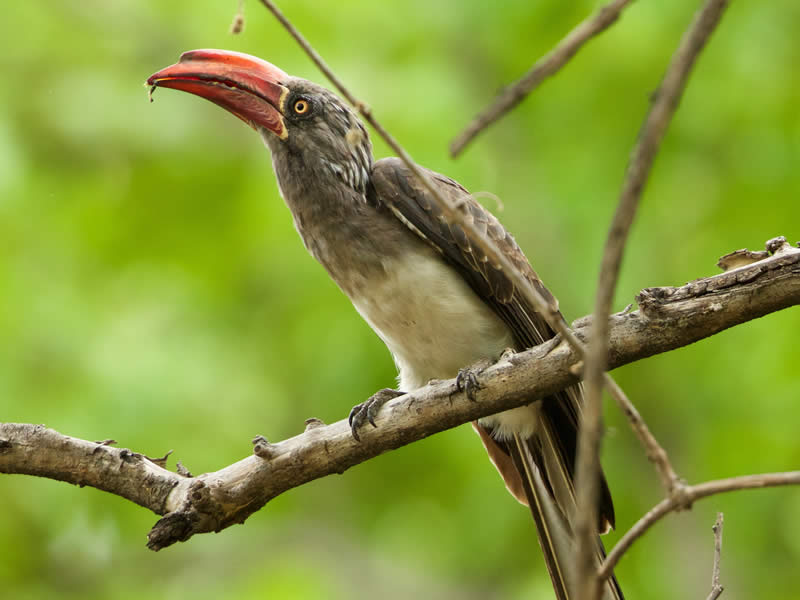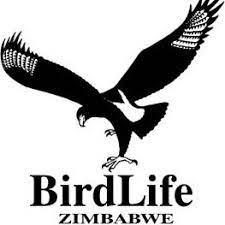BIRDING IN ZIMBABWE
Mana Pools National Park

Red-necked Falcon

Southern Carmine Bee-eater

Crowned Hornbill
Mana Pools National Park in the lower Zambezi Valley is another great game area with great birds too. The entrance road goes through dry woodlands and mopane with jesse thickets on the sands, and then you hit the ancient floodplain of the river and drop down into acacia and mixed woodlands, pans and plains.
The Zambezi River and the floodplain is the main attraction. Here there are some specials. Rufous-bellied Heron and Long-toed Lapwing like the areas of fringing weed along the river banks and White-fronted Plover and African Skimmer favour the open sandbars for breeding; White-crowned Lapwings and Water Thick-knees are common along the edges of the banks and along the waterline and their calls are non-stop. Collared Pratincole fly over and roost in favoured spots on islands or sandbars whilst Blue-cheeked Bee-eaters visit in summer – the Southern Carmine Bee-eater colonies are vibrant with colour, with year-round White-fronted Bee-eater colonies along the steep banks. White-backed Night-heron do occur but are secretive and are most common in the thick fringing vegetation of Chikwenya Island.
Pel’s Fishing-owls are quite frequent around the National Park lodges and appear along the river at other spots occasionally. Dwarf Bittern are found mainly in the rains at inland pans. Summer brings Woolly-necked Storks to the floodplain and through the woodlands you can find Ayres’s Hawk-eagle, Lilian’s Lovebird and Crowned Hornbill. Western Banded Snake-eagle often sit quietly in tall trees overlooking the river and are easy to miss, whilst Red-necked Falcon whiz through after small birds and are increasing from their strongholds of the Rukomechi and Sapi rivers on the west and east boundaries of the park. African Mourning Doves are quite local and like to breed on islands colonised by apple-ring acacia. Mottled Spinetails favour certain baobabs but Böhm’s Spinetail are frequent, flitting over the floodplain and river. The thickets produce Eastern Nicator, African Pitta, Red-capped Robin-chat, Bearded Scrub-robin and others. Collared Palm-thrush should be sought after in Ilala palm areas, whilst the cooler riverine has Black-throated Wattle-eye and Livingstone’s Flycatcher. Meves’s Starlings are just plain common! Purple-banded Sunbird and Collared Sunbird like the woodlands and riverine but Shelley’s Sunbird only occurs at wild mistletoe during the rains.
Image credits: Mana Pools by Duncan Watson; Red-necked Falcon, Southern Carmine Bee-eater & Crowned Hornbill by Roger MacDonald
